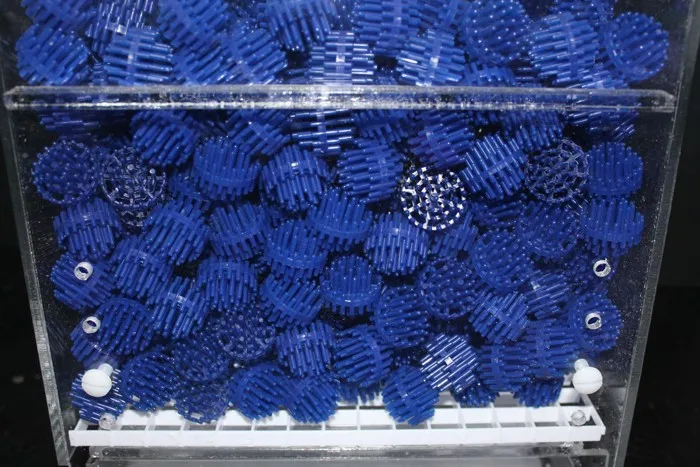Bio Balls Vs Ceramic Rings
The debate over bio balls vs ceramic rings has been ongoing for quite some time in the aquarium community. Both these filter media are designed to perform the same function, i.e., biofiltration, but they are different in their own ways. If you have been wondering which one to choose for your aquarium, this article will provide you with an in-depth analysis of the pros and cons of each option.
Pain Points Related to Bio Balls vs Ceramic Rings
Choosing the right filter media for your aquarium can be a daunting task. With so many options available, it's tough to know which one will work best for your tank. Moreover, if you end up selecting the wrong one, it can lead to build-up of toxins, reduced water quality, and unhappy (or even dying) fish.
Target of Bio Balls vs Ceramic Rings
The primary purpose of both bio balls and ceramic rings is to establish a colony of beneficial bacteria in your aquarium filter, which break down harmful ammonia and nitrite. The more surface area that is available for these bacteria to colonize, the better the biofiltration will be.
Summary of Main Points
So far, we've covered how hard it can be to choose the right filter media and the purpose of both bio balls and ceramic rings. The two filter media are designed to perform the same function of biofiltration and are different in their own ways. Furthermore, the more surface area available for bacteria to colonize, the better the biofiltration will be.
Bio Balls vs Ceramic Rings - Pros and Cons
When it comes to bio balls, they are generally cheaper and more lightweight compared to ceramic rings. They tend to be less porous, which means you need more bio balls to achieve the same surface area as ceramic rings. On the other hand, ceramic rings are more expensive and heavier but have a much higher surface area, allowing for greater biofiltration.

Speaking from personal experience, I have experimented with both bio balls and ceramic rings in my aquarium filters. Ultimately, I found that ceramic rings were more effective in achieving consistent water parameters and better biofiltration. Moreover, they require less maintenance and do not need to be replaced as frequently as bio balls.
When to Use Bio Balls vs Ceramic Rings
If you are just starting out with an aquarium or have a small to medium-sized tank, bio balls could be an ideal option. They are cost-effective, lightweight, and easy to use. However, if you have a larger aquarium, heavily stocked with fish, or if you are running a high-tech planted tank with CO2 injection, you may want to consider using ceramic rings. The higher surface area will provide better biofiltration, which is crucial in these situations.
Bio Balls vs Ceramic Rings - Maintenance
Maintenance of both filter media is essential to ensure they work at their best. Bio balls require more cleaning and maintenance than ceramic rings. They can quickly become clogged due to their less porous nature, requiring frequent rinsing to prevent them from becoming a breeding ground for harmful bacteria. Ceramic rings, on the other hand, require less maintenance, given their higher surface area and its ability to handle good water flow.
Long-Term Benefits of Using Ceramic Rings Over Bio Balls
The long-term benefits of using ceramic rings over bio balls are that they are much more durable. Ceramic rings require less replacement, saving time and money in the long run. Once the bacteria colonies are established on the ceramic rings, they will continue to provide biofiltration for years to come. In contrast, bio balls need to be replaced periodically, adding to the long-term cost of maintaining your aquarium filter.
Question and Answer
Q1. What is the primary purpose of bio balls and ceramic rings?
A. Their primary purpose is to establish a colony of beneficial bacteria in your aquarium filter, which break down harmful ammonia and nitrite.
Q2. Which filter media is more expensive: ceramic rings or bio balls?
A. Ceramic rings are generally more expensive and heavier than bio balls.
Q3. Which filter media requires more maintenance: bio balls or ceramic rings?
A. Bio balls require more maintenance as they can quickly become clogged and require frequent rinsing, whereas ceramic rings require less maintenance due to their higher surface area.
Q4. Which filter media is more durable: ceramic rings or bio balls?
A. Ceramic rings are much more durable and require less replacement, providing long-term benefits for your aquarium filter. Bio balls need to be replaced periodically, adding to the long-term cost of maintaining your aquarium filter.
Conclusion of Bio Balls vs Ceramic Rings
Both bio balls and ceramic rings serve the same purpose of biofiltration but differ in their own ways. The decision of which one to choose depends on the size of your tank, the number of fish, and your budget. If you are running a high-tech planted tank with CO2 injection, consider using ceramic rings, whereas bio balls are a cost-effective option for small to medium-sized aquariums. Remember that regardless of which one you choose, proper maintenance is essential to ensure consistent water parameters and optimal biofiltration in your aquarium.
Gallery
Bio Balls Vs Ceramic Rings | Aqua Movement

Photo Credit by: bing.com / balls
Bio Balls Vs Ceramic Rings | Aqua Movement

Photo Credit by: bing.com / rings
36mm Bio Balls,Aquarium Filter Bioball With Sponge And Ceramic Ring

Photo Credit by: bing.com / balls bio ceramic 36mm aquarium filter sponge ring
Bio Balls Vs Ceramic Rings - Pros And Cons | Aqua Movement

Photo Credit by: bing.com /
Comparison: Differences B/w Ceramic Rings Vs Bio Balls

Photo Credit by: bing.com / noodles